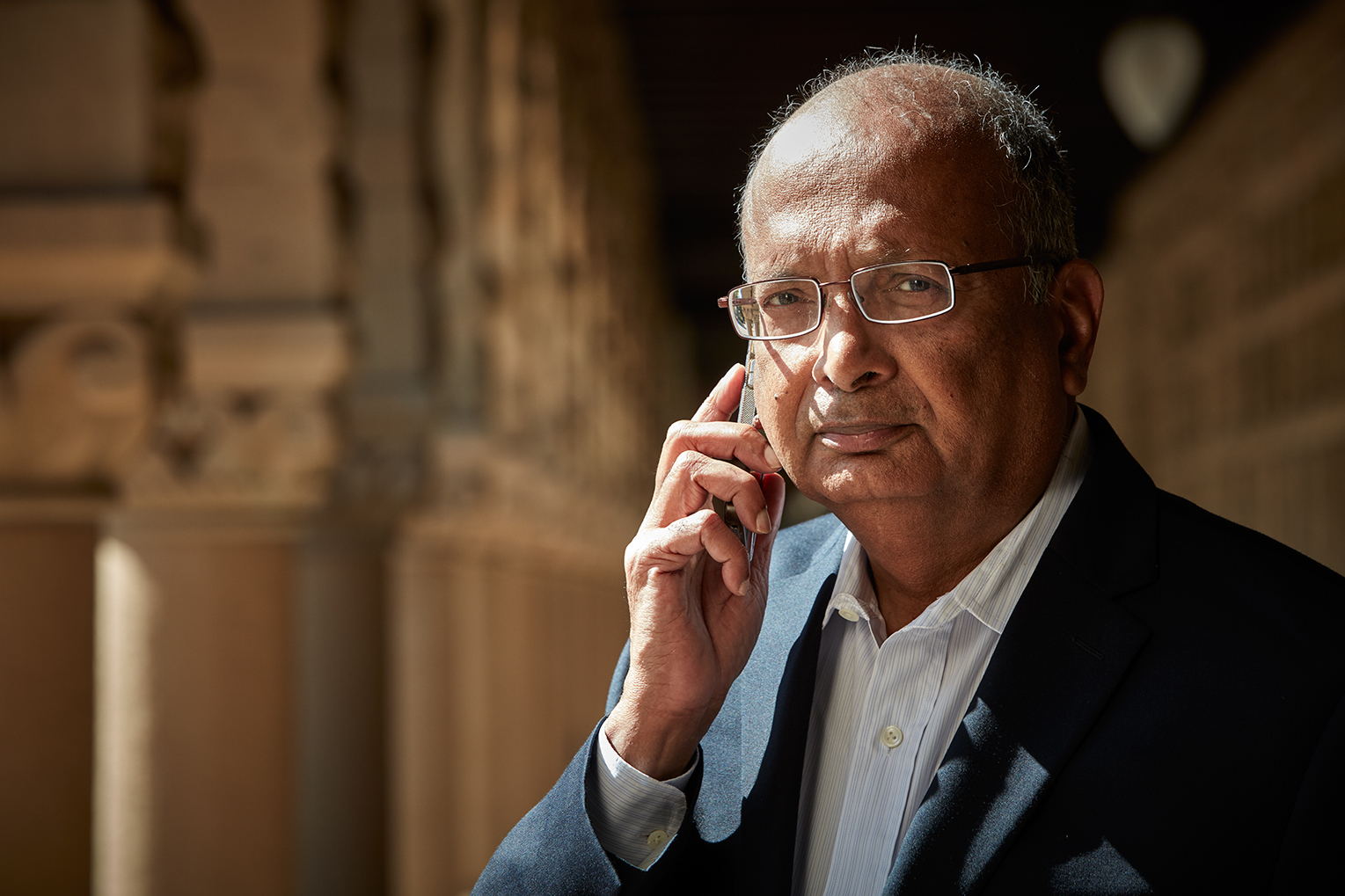-
Indian-American engineer nominated for Award for his work in developing faster wireless connectivity
-
The invention is essential for current 4G LTE networks and will be a central part of future 5G networks
-
Paulraj’s idea to add multiple antennae to both ends of a wireless link allows for higher rate of data transmission and greater availability
-
EPO President Battistelli: “The technology developed by Paulraj and his team has contributed significantly to faster wireless data transmission, one of the cornerstones of the digital era.”
As more people access the internet from their smartphones and wireless devices, the demand for  network providers to deliver faster, more reliable connections is rising. But the problem with the wireless spectrum is that it is finite. Bandwidth must be shared between those surfing the web, watching TV broadcasts, and listening to podcasts and radio. Bandwidth is precious – and it’s expensive too. So when Arogyaswami Paulraj (72), an electrical engineer from India who moved to the United States in 1991 to teach at Stanford University, came up with a way to cram more digital data into the radio waves that make up the wireless spectrum, it was a boon for both the network providers and their customers. Along the way he was supported by two of his post-doctoral students: David Gesbert and Robert Heath. The team helped transform Paulraj’s ideas into one of wireless communications’ most successful and influential technologies.
network providers to deliver faster, more reliable connections is rising. But the problem with the wireless spectrum is that it is finite. Bandwidth must be shared between those surfing the web, watching TV broadcasts, and listening to podcasts and radio. Bandwidth is precious – and it’s expensive too. So when Arogyaswami Paulraj (72), an electrical engineer from India who moved to the United States in 1991 to teach at Stanford University, came up with a way to cram more digital data into the radio waves that make up the wireless spectrum, it was a boon for both the network providers and their customers. Along the way he was supported by two of his post-doctoral students: David Gesbert and Robert Heath. The team helped transform Paulraj’s ideas into one of wireless communications’ most successful and influential technologies.
For this achievement, the European Patent Office (EPO) has named Arogyaswami Paulraj and his team as one of three finalists for the European Inventor Award 2016 in the category “Non-European countries”. The EPO will announce the winners of the 11th edition of its annual innovation prize at a ceremony in Lisbon on 9 June.
“In today’s interconnected world, wireless connections have become a fundamental part of everyday life for billions of people across the world,” said EPO President Benoît Battistelli announcing the European Inventor Award 2016 finalists. “The technology developed by Arogyaswami Paulraj and his team has contributed significantly to faster wireless data transmission, one of the cornerstones of the digital era. In doing so they have helped us all connect faster.”
Multiple input, multiple output
The idea was simple, yet ingenious: In order for devices at both ends of a wireless link to transmit data at a faster rate, additional antennae are required. The technique is known as spatial multiplexing, but it is more commonly referred to as MIMO, for “multiple input, multiple output”. There was only one problem; one that had haunted radio communications since its inception: multipath propagation. Radio signals tend to bound around before reaching their target and when two discrete singles are transmitted over the same frequency, it is nearly impossible to distinguish them from each other using one antenna.
By adding an additional receiving antenna and rethinking multipath propagation in order to use the distortions it produces to help distinguish between signal waves, Paulraj and his team were not only able to improve the bit rate, or connection speed – they also enlarged signal coverage areas. What’s more: MIMO was able to achieve a higher rate of data transmission within the same channel bandwidth (frequency spectrum), meaning there was no need for extra power or coveted bandwidth.
“Once you have a two-by-two system [four antennae] you get twice the throughput,” explains Paulraj. “A four-by-four system creates four times the throughput. In cellular communications or in Wi-Fi, where spectrum is very, very limited, if you have multiple antennae you can increase the speed of the link.”
https://www.youtube.com/watch?v=ktq54negz8&feature=youtu.be
MIMO and the status quo
Speedier and more reliable Internet access has become increasingly important in today’s ever-connected world. Seven years ago, network traffic from mobile devices going online exceeded traffic for voice calls for the first time. Since then, demand for data has grown exponentially. By 2020, according to some estimates, people will be using a whopping 33 times more data than they do today. With the number of active cell phone contracts topping 6 billion and only expected to grow, network providers have had to continuously upgrade their infrastructure from one level to the next.
Today, MIMO is a core technology used in all modern wireless networks. Without it, high-speed Internet connections embodied in 4G LTE cellular and the latest Wi-Fi networks would not be possible. MIMO’s key advantage is its intrinsic scalability – the more antennae that are added, the faster the connection speed becomes. By allowing simultaneous up- and download transmissions, multiple streams of data can be exchanged within the same channel. These features also mean MIMO will continue to be vital in the next generation of cellular networks, known as 5G.
Ahead of his time
Paulraj, who served in the Indian Navy for 30 years, earning the rank of Commodore, developed the idea for MIMO in 1992 while at Stanford University, where he is now a professor emeritus of electrical engineering. The idea behind MIMO got its start when Paulraj set out to find a method for a US Airforce reconnaissance plane to listen in on multiple signals without interference – the solution, a multi-antenna array. After modifying this concept for wireless communications, he was awarded his first MIMO-related patent in 1994, but it would take nearly a decade for the first commercial applications of the technology to emerge. This delay was largely attributable to the fact that US wireless networks were still mostly analogue. Paulraj’s technology required digital networks to function, and a wholesale infrastructure upgrade was not carried out until the early 2000s. Today, however, MIMO is ubiquitous.
The world as we know it




